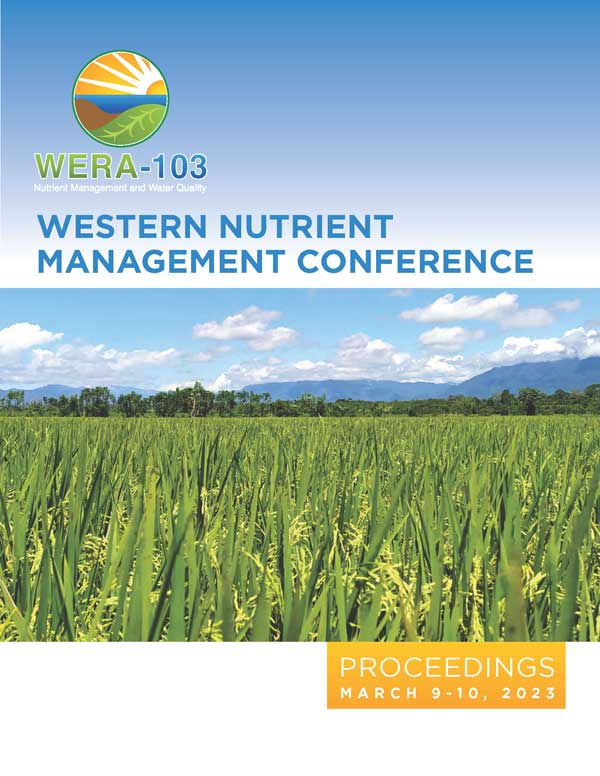Download the Conference Proceedings
Proceedings
Authors
| Filter results2 paper(s) found. |
|---|
1. Residue Decomposition of Surface and Incorporated Barley, Corn, and Wheat at Varying Fertilizer-N RatesCereal crops are commonly grown in southern Idaho and most parts of the western United States. These cereal crops are routinely harvested for their grain with the remaining plant material (chaff, stems, leaves, etc.) left in the field to decompose prior to planting of following spring crops. Understanding the effects of post-harvest residue management on barley (Hordeum vulgare L.), corn (Zea mays L.), and wheat (Tritcum aestivum L.) residue is important for optimizing... C. Rogers, G. Thurgood, B. Dari, J. Marshall, O.S. Walsh, K. Schroeder, G. Loomis |
2. Helpful or Not?- Biostimulant Use in Corn Silage ProductionThere has been a recent increase in both the availability and marketing of biostimulant products to local producers, particularly to dairymen, in southern Idaho. These products claim to increase yield and nutrient use efficiency while improving soil health on agricultural fields. If these claims are true, the use of these products would ultimately aid in promoting the overall sustainability of Idaho farms. However, there is a lack of objective data to support these claims, leaving producers uncertain... L.R. Schott, S. Hines, J. Packham, G. Loomis, M. De haro marti, C. Willmore |
